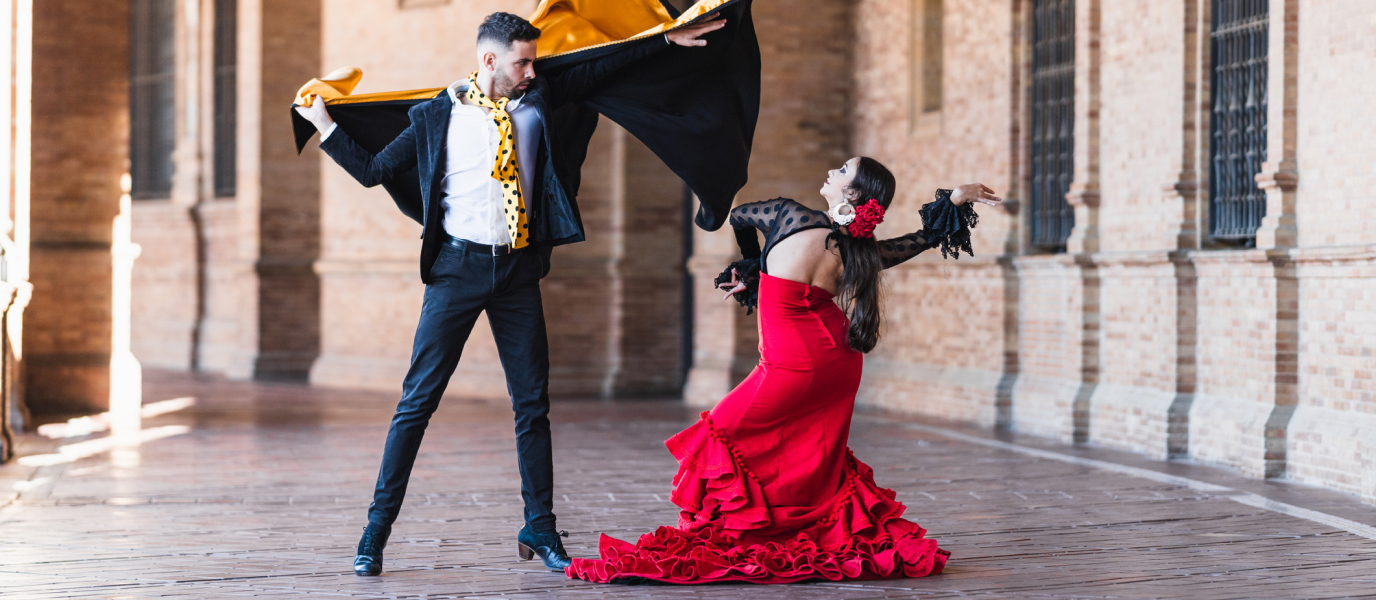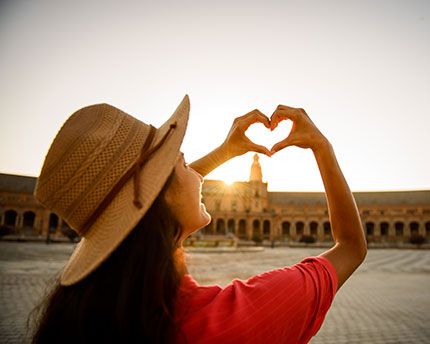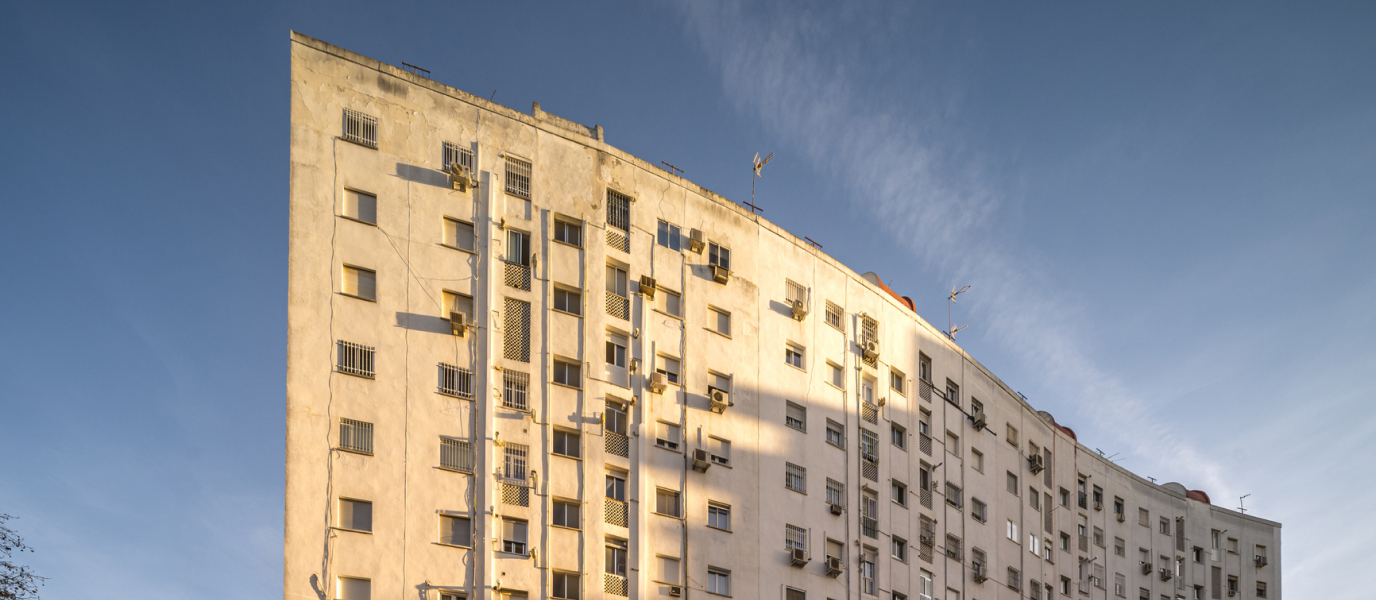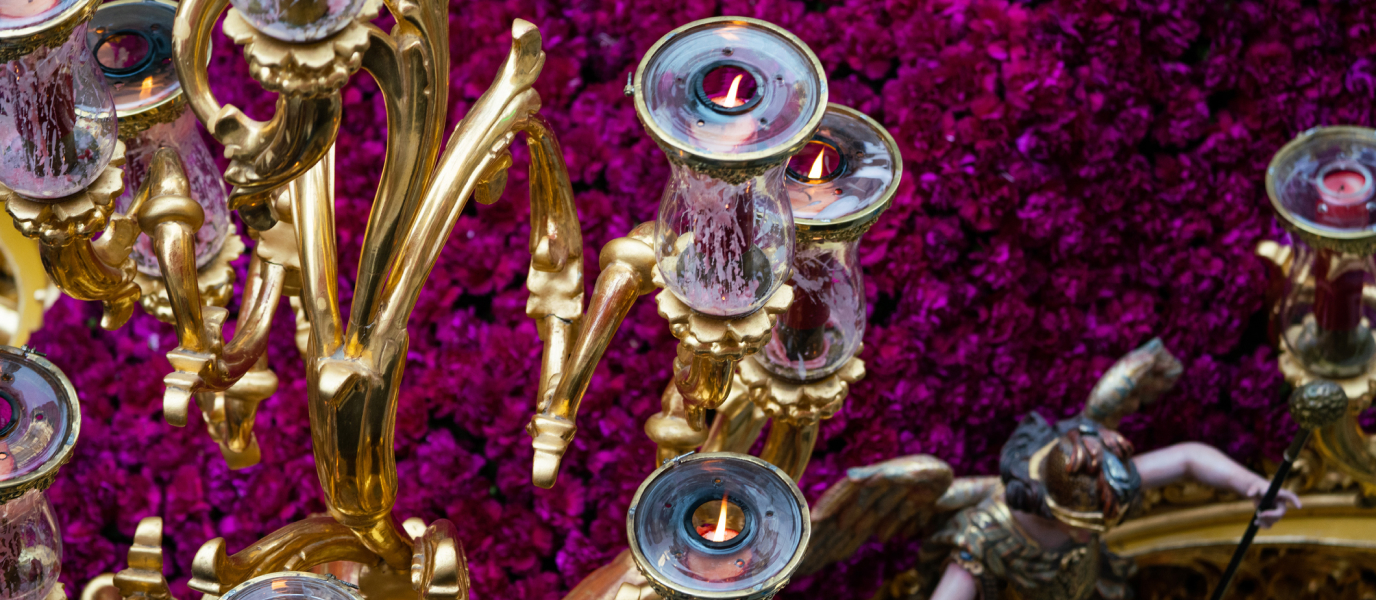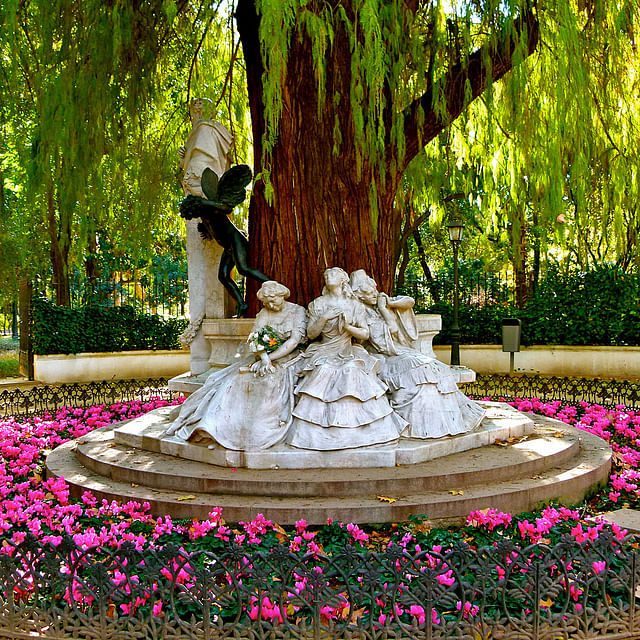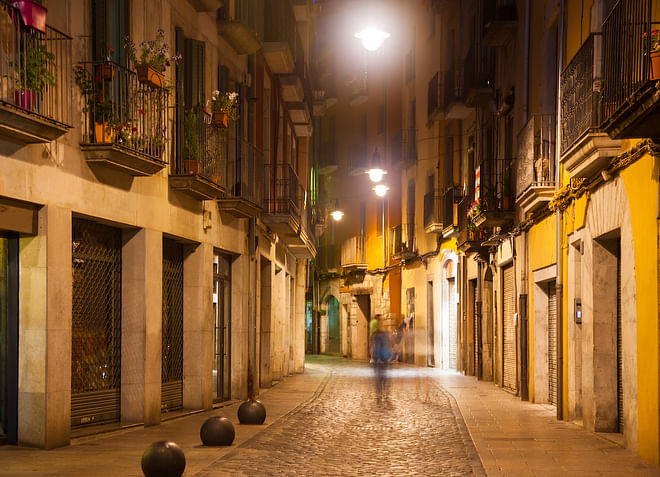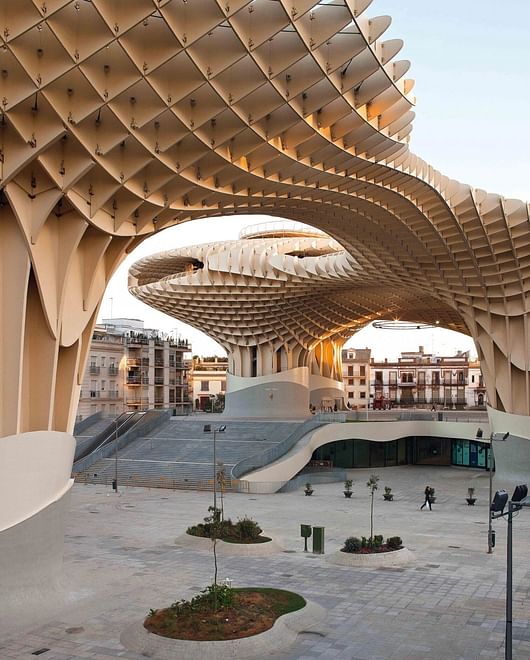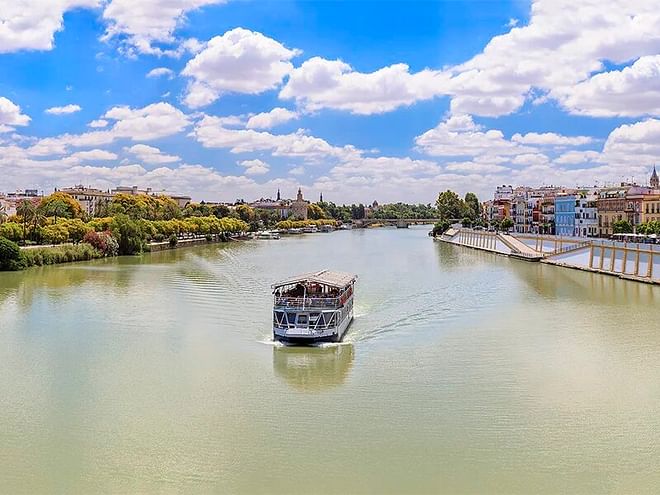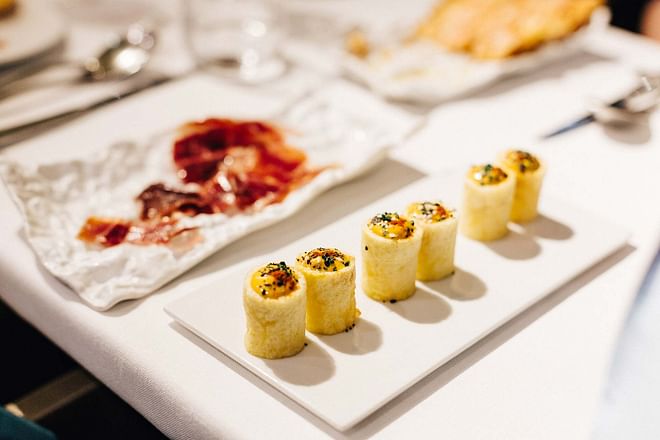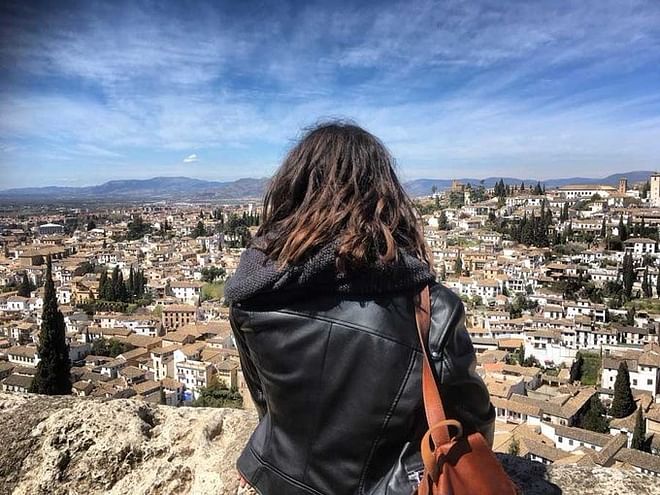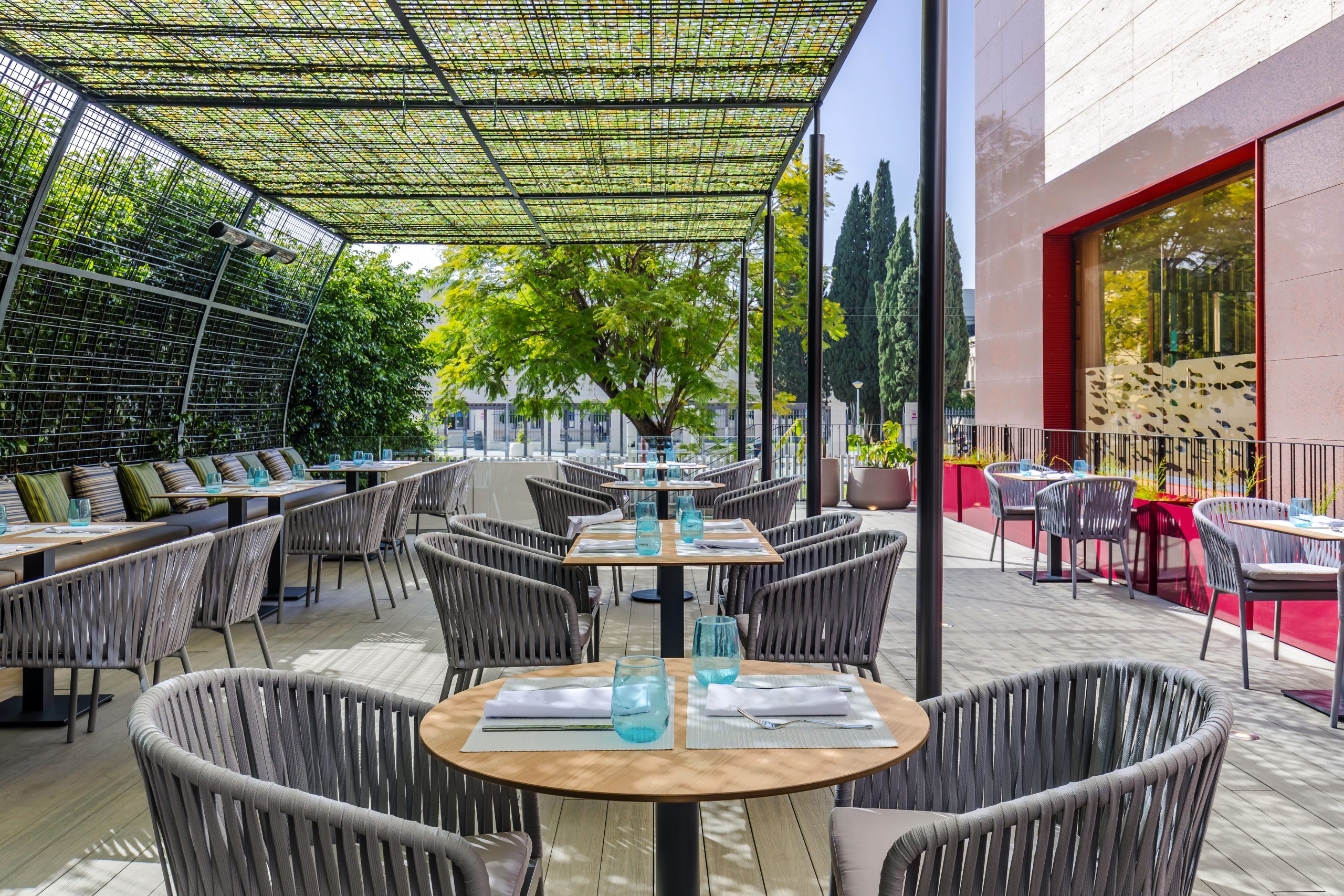You don’t need to be an expert to feel the force of cante jondo (flamenco’s most profound type of vocal style) or be moved by the zapateado (shoe tapping) or the strumming of a Spanish guitar. Just feeling it is good enough for enjoying a flamenco show in Seville, which is the reason why this art form is Intangible Cultural Heritage of Humanity. The origins of flamenco date back to the fifteenth century and the arrival of gypsies in Jerez and Seville, although for a long time it was a form of celebratory and artistic expression confined to family gatherings. It wasn’t until the late nineteenth century when singers began to perform in cafés.
Flamenco, however, does not just consist of one style of music, but rather many variations, up to a total of 50, according to their origin and rhythmic patterns. These are called the palos of flamenco, the most well-known being the alegrías, bulerías, fandangos, seguiriyas, sevillanas and soleares. This is where the Spanish expression ‘tocar todos los palos’—literally ‘to touch all the sticks’, in other words, to be a dab hand at many things—comes from. They usually have the same structure, with one fixed section and another more changeable one reserved for improvisation. The most authentic flamenco to be found in Seville is at a peña. Peñas are private circles where everyone gets involved in what Sevillians call the jaleo—the shouts and words of encouragement directed at performers. However, the more professional form of flamenco is found at tablaos, distinguished performance venues where you can also have dinner or drinks. You can also see flamenco at cultural centres, which are generally situated close to museums.
Read on for a list of the best places to enjoy a flamenco show in Seville.
A tablao where flamenco and food meet
Tablaos traditionally relate to places with good flamenco and good tapas. They take their name from the wooden flooring upon which artists perform, giving the zapateado that distinctive sound. Below are a selection of Seville’s most important tablaos:
Tablao Los Gallos
The oldest and most well-known in Seville. It opened its doors in the Santa Cruz neighbourhood in 1966 and, since then, great artists such as Farruco, Rafael Campallo and José Pérez have passed through them. Here you will only find guitars, vocals and dancing, without microphones or sound equipment, for the most traditional and authentic flamenco experience with amazing acoustics. The venue is small and intimate and offers one-and-a-half-hour-long performances with 10 artists, so you can enjoy flamenco at its purest. Capacity is limited to 120 people so we recommend that you make a reservation in advance if you are set on experiencing a night of flamenco at Los Gallos.
Plaza de Santa Cruz, 11.
El Patio Andaluz
A succession of up to 20 artists perform on the stage of this venue, under the artistic direction of the bailaor (dancer) ‘El Duende’. The repertoire covers the main palos of flamenco and has even been broadcast by Televisión Española on their international channel to promote the art form. Here you can even enjoy the flamenco adaptation of the opera Carmen by Bizet. There are two performances every day, one at 7:00 PM and another at 9:30 PM, and you can choose to have dinner, tapas or a drink included.
On the ground floor is the Museum of Flamenco and Andalusian Art, which exhibits photos, artist costumes and other items related to Andalusian culture such as equestrianism and wine. Admission is included with a show ticket.
Calle de María Auxiliadora, 18.
El Patio Sevillano
Next to the La Maestranza bullring, facing the Triana neighbourhood, is another quintessential Sevillian tablao. A whole host of figures from the world of flamenco have tread the boards at this venue over the last 50 years. It offers two daily performances each lasting an hour and a half, one at 7:00 PM and another at 9:30 PM, with the option of drinks, dinner or tapas. It has capacity for 300 people and now also offers flamenco classes in small groups.
Paseo Cristóbal Colón, 11.
Authentic flamenco in a cultural centre
A more intense flamenco experience can also be enjoyed at many cultural centres in Seville without the distraction of waiters serving food and drinks. Sat on a seat right in front of the artists at these temples of flamenco you’ll no doubt feel the duende—its ineffable spirit.
La Casa del Flamenco-Auditorio Alcántara
Every night, the interior courtyard of a fifteenth-century palatial house in the old Jewish quarter of Santa Cruz (link interno) is witness to the artistic flair of a flamenco group formed of a singer, a guitarist and two dancers. The audience sits on chairs around the stage scattered around the courtyard’s columns. People don’t come to eat or drink here but to enjoy flamenco in a small and intimate setting. The performance lasts an hour and there are two a day in winter and up to three in summer. The space is also used occasionally for theatre performances, workshops, exhibitions and concerts.
Calle Ximénez de Enciso, 28.
Casa de la Guitarra
This flamenco cultural centre offers performances that journey through flamenco’s different styles by way of three disciplines: dance, singing and guitar. It is run by José Luis Postigo, the winner of two national flamenco guitar awards. There are two daily performances each lasting an hour, one at 7:30 PM and another at 9:00 PM.
During the day, you can also visit free of charge its collection of guitars at the Guitar Museum—which houses over 60 pieces from the last three centuries.
Calle Mesón del Moro, 12.
‘Cristina Hoyos’ Flamenco Dance Museum
Cristina Hoyos is the flamenco legend who runs the museum, which offers a full experience by way of daily performances. The building is spread out across three floors with interactive screens, temporary exhibitions and a VIP show. It also offers private flamenco classes in the basement. The ‘Patio Flamenco’ (Flamenco Courtyard) show takes place on a stage with a backdrop and theatre lights, and if you look up you’ll no doubt be surprised to see hanging chairs and Sevillian orange trees. The most VIP performance at the museum is ‘Flamenco Íntimo’ (Intimate Flamenco), an a cappella singing performance in front of a small audience, which takes place in the museum’s vaults.
Calle Manuel Rojas Marcos, 3.
Whichever place you choose to enjoy this incredible art form, remember that the Triana neighbourhood (link interno) is the cradle of numerous figures from the world of flamenco and the Monument to Flamenco Art is found on Plaza del Altozano.




































































